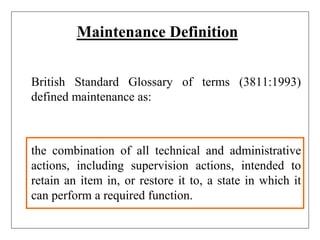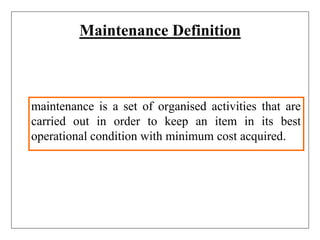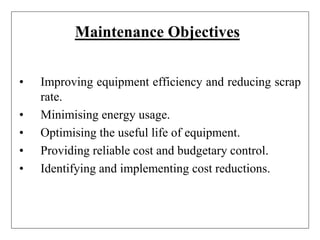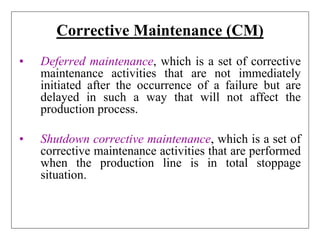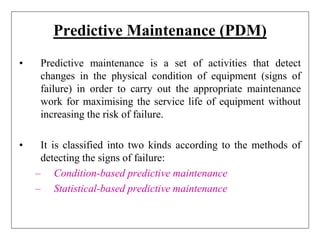Maintenance involves actions to retain or restore an item to perform its required function. There are various types of maintenance. Preventive maintenance involves activities carried out before failure to protect equipment and reduce failure probability. Corrective maintenance repairs equipment after failure. Predictive maintenance uses condition monitoring to detect potential failures and schedule maintenance. The goal is maximizing uptime at lowest cost.
